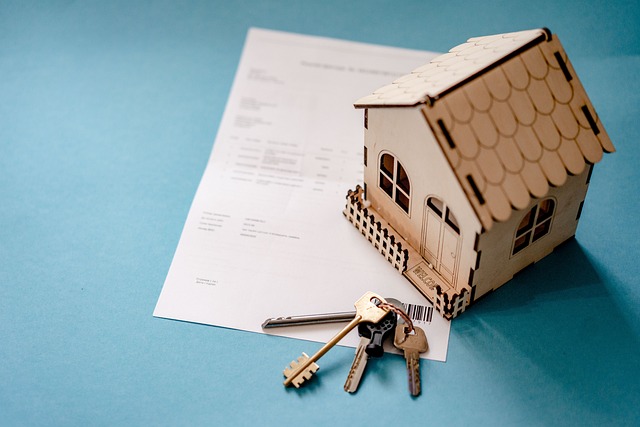2023 has seen robust growth and maturation trends in the Austin area's commercial real estate market, with a particular surge in demand for office spaces as tech companies capitalize on the city's talent pool and favorable business environment. This has led to a tighter office market with decreasing vacancy rates and increasing rental costs. The industrial sector is also thriving, boosted by e-commerce growth and the need for distribution networks. Retail centers show resilience, particularly those anchored by grocers. Investor confidence in Austin's commercial properties remains strong, buoyed by the city's economic diversity and growth potential. Strategic location and property type are paramount for investment success; investors should research the diverse types of properties available, including office spaces, retail centers, industrial warehouses, and multifamily housing complexes, and consider market trends, economic indicators, and local regulations. Engaging with local experts is advised to navigate this dynamic market effectively, as it offers significant potential for high returns amidst a competitive landscape.
Navigating the intricacies of the Austin area commercial real estate market requires a keen understanding of its dynamic landscape. Prospective home buyers are faced with a complex array of factors that influence investment decisions, from location and property type to economic drivers impacting property values. This article delves into the essential aspects of evaluating and purchasing commercial properties in Austin, offering a comprehensive guide for buyers looking to maximize their investment. We’ll explore current market trends, key influencers on commercial real estate investments, and strategies to secure advantageous deals amidst competition. Additionally, we’ll break down the elements that affect property value, assess the impact of local zoning laws, and provide insights into financing and interest rates. With a focus on due diligence and leveraging local expertise, home buyers can make informed decisions in this thriving market.
- Navigating the Austin Area Commercial Real Estate Market: A Comprehensive Guide for Buyers
- – Overview of current market trends in Austin commercial properties
- – Key factors influencing investment decisions, including location and property type
Navigating the Austin Area Commercial Real Estate Market: A Comprehensive Guide for Buyers

Navigating the Austin area commercial real estate market requires a strategic approach, given its dynamic and competitive nature. Prospective buyers should begin by thoroughly researching the various types of commercial properties available within this vibrant Texas city, including office spaces, retail centers, industrial warehouses, and multifamily housing complexes. The Austin market is characterized by its robust growth and high demand, with a particular emphasis on technology and innovation sectors. This has led to a steady increase in commercial property values and rental rates, making it imperative for buyers to analyze market trends and economic indicators carefully. Key factors such as location, accessibility, and the potential for rental income generation are critical considerations when evaluating Austin area commercial properties.
For those looking to invest in this sector, understanding the local economy’s health is essential. Austin’s status as a tech hub and its reputation for being one of the fastest-growing cities in the U.S. have a direct impact on commercial real estate opportunities. Buyers should also consider the city’s regulatory environment and how it may affect their investment, including zoning laws, property taxes, and development regulations. Engaging with local experts, such as real estate agents, attorneys, and financial advisors who specialize in commercial transactions within this region, is highly recommended to navigate the complexities of purchasing commercial properties in the Austin area.
– Overview of current market trends in Austin commercial properties

The Austin area commercial property market has been experiencing a dynamic shift, with trends indicating both growth and maturation in recent times. Notably, the office sector has seen a surge in demand, particularly in tech-centric areas, as companies continue to expand or relocate their operations to benefit from the city’s talent pool and business-friendly environment. This demand has led to a tightening of available office space, pushing vacancy rates lower and driving up rental prices. Additionally, the industrial sector is thriving, with increased construction activity to meet the needs of e-commerce growth and distribution networks. The retail market, while facing challenges from the broader shift towards online shopping, still maintains resilience with certain sectors like grocery-anchored centers performing well. Investment in Austin area commercial properties remains robust, as both local and out-of-state investors recognize the city’s potential for long-term gains, supported by its strong economic fundamentals and diverse industry base.
– Key factors influencing investment decisions, including location and property type

In the dynamic Austin area commercial real estate market, home buyers and investors face a complex landscape of factors that significantly influence their investment decisions. Prime among these is location, with its intrinsic impact on both property value and rental demand. Strategically positioned properties within the vibrant city of Austin, known for its robust economy and tech industry growth, present lucrative opportunities. Investors are keenly aware that commercial properties nestled in the heart of Austin or along its growth corridors are likely to yield higher returns due to their desirability among businesses and entrepreneurs. Moreover, the type of property—be it office spaces, retail centers, industrial warehouses, or multifamily residential units—plays a pivotal role in determining the investment’s potential success. Each property type caters to distinct market segments, and understanding the needs and behaviors of these segments is crucial for making informed decisions. For instance, Austin’s burgeoning tech sector may favor office spaces with modern amenities and adaptable layouts, while its growing population demands more multifamily housing options. Investors who can identify and capitalize on these trends will be well-positioned to reap the benefits of the Austin area commercial properties market. The interplay between property type, location, and market demand is a critical puzzle that investors must solve to achieve favorable outcomes in this competitive arena.
In conclusion, discerning buyers in the Austin area have a dynamic and promising landscape for commercial real estate investment. The current market trends underscore the potential for lucrative opportunities, with key factors such as location and property type playing pivotal roles in informed decision-making. Prospective investors should consider the detailed insights provided in this guide when navigating the Austin area commercial properties market to make strategic choices aligned with their investment goals. With careful analysis and strategic planning, the Austin market presents a fertile ground for buyers looking to capitalize on its robust growth and vibrant economic climate.
